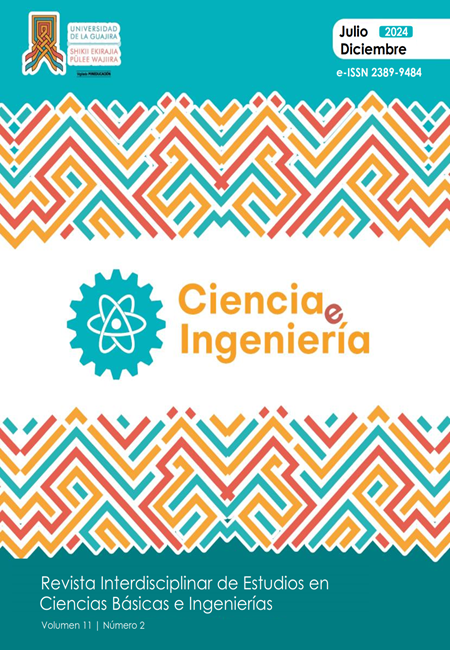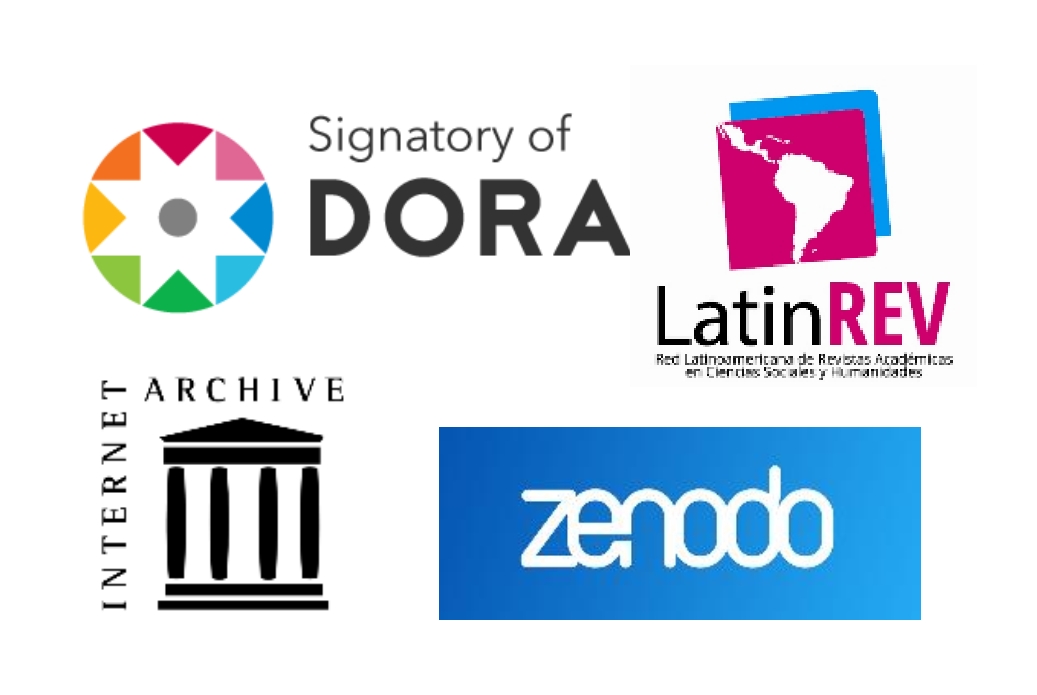Isolation and use of microorganisms from activated sludge for the formation of biofertilizers
DOI:
https://doi.org/10.5281/zenodo.12809495Keywords:
biofertilizer, Phaseolus vulgaris, Pseudomonas, Rhizobium, soils, TrichodermaAbstract
This study investigated the potential of microorganisms isolated from activated sludge as biofertilizers for Phaseolus vulgaris. Activated sludge, a byproduct of wastewater treatment, was processed to isolate and quantify beneficial microorganisms. The efficacy of Pseudomonas sp. (isolated from the sludge), Trichoderma sp., Rhizobium sp., and a mixture of the three was compared against a control with sterile distilled water. The experimental phase involved 240 bean seeds distributed in 10 trays of 24 wells each. Treatments were applied every two days for 15 days, evaluating parameters such as stem growth, stem thickness, and number of leaves. The results revealed significant differences between treatments. Pseudomonas sp. showed the greatest effect on stem growth (20.5 cm), while Trichoderma sp. promoted the greatest root development (24.0 cm). The mixture of microorganisms resulted in the greatest leaf growth (5.5 cm). Individual treatments with Pseudomonas sp., Rhizobium sp., and Trichoderma sp. increased the water content in plants to 90%, compared to 80% in the control and mixture. This study demonstrates the potential of microorganisms from activated sludge as effective biofertilizers, offering a sustainable alternative to chemical fertilizers.
Downloads
References
Barea, J. M., Pozo, M. J., Azcón, R. & Azcón-Aguilar, C. (2005). Microbial co-operation in the rhizosphere. Journal of Experimental Botany, 56(417), 1761-1778.
Bhardwaj, D., Ansari, M. W., Sahoo, R. K. & Tuteja, N. (2014). Biofertilizers function as key player in sustainable agriculture by improving soil fertility, plant tolerance and crop productivity. Microbial Cell Factories, 13(1), 66.
Berendsen, R. L., Pieterse, C. M. & Bakker, P. A. (2012). The rhizosphere microbiome and plant health. Trends in Plant Science, 17(8), 478-486.
Bucci, P. L. (2021). Remoción simultánea de nitrógeno y carbono orgánico en SBR usando la tecnología de granulación aeróbica (Doctoral dissertation, Universidad Nacional de La Plata).
Cano, M. A. (2011). Interacción de microorganismos benéficos en plantas: Micorrizas, Trichoderma spp. y Pseudomonas spp. Una revisión. Revista UDCA Actualidad & Divulgación Científica, 14(2), 15-31.
Chirino-Valle, I., Kandula, D., Littlejohn, C., Hill, R., Walker, M., Shields, M. & Hampton, J. (2016). Potential of the beneficial fungus Trichoderma to enhance ecosystem-service provision in the biofuel grass Miscanthus× giganteus in agriculture. Plant and Soil, 403(1), 409-424.
Chirino-Valle, I., Kandula, D., Littlejohn, C., Hill, R., Walker, M., Shields, M., Cummings, N., Hettiarachchi, D. & Wratten, S. (2016). Potential of the beneficial fungus Trichoderma to enhance ecosystem-service provision in the biofuel grass Miscanthus × giganteus in agriculture. Scientific Reports, 6. https://doi.org/10.1038/srep25109
Compant, S., Duffy, B., Nowak, J., Clément, C. & Barka, E. A. (2005). Use of plant growth-promoting bacteria for biocontrol of plant diseases: principles, mechanisms of action, and future prospects. Applied and Environmental Microbiology, 71(9), 4951-4959.
García-Fraile, P., Menéndez, E. & Rivas, R. (2015). Role of bacterial biofertilizers in agriculture and forestry. AIMS Bioengineering, 2(3), 183-205.
Gouda, S., Kerry, R. G., Das, G., Paramithiotis, S., Shin, H. S. & Patra, J. K. (2018). Revitalization of plant growth promoting rhizobacteria for sustainable development in agriculture. Microbiological Research, 206, 131-140.Harman, G. E. (2006). Overview of Mechanisms and Uses of Trichoderma spp. Phytopathology, 96(2), 190-194.
Harman, G. E. (2011). Multifunctional fungal plant symbionts: new tools to enhance plant growth and productivity. New Phytologist, 189(3), 647-649.
Harman, G. E., Howell, C. R., Viterbo, A., Chet, I. & Lorito, M. (2004). Trichoderma species—opportunistic, avirulent plant symbionts. Nature Reviews Microbiology, 2(1), 43-56.
Hoitink, H. A. J., Madden, L. V. & Dorrance, A. E. (2006). Systemic resistance induced by Trichoderma spp.: Interactions between the host, the pathogen, the biocontrol agent, and soil organic matter quality. Phytopathology, 96(2), 186-189.
Hoitink, H. A. J. (1993). Mechanisms of suppression of soilborne plant pathogens in compost amended substrates. Science and engineering of composting: Design, environmental, microbiological and utilization aspects, 601-621.
López-Bucio, J., Pelagio-Flores, R. & Herrera-Estrella, A. (2015). Trichoderma as biostimulant: exploiting the multilevel properties of a plant beneficial fungus. Scientia Horticulturae, 196, 109-123.
Lugtenberg, B. & Kamilova, F. (2009). Plant-growth-promoting rhizobacteria. Annual Review of Microbiology, 63, 541-556.
Malusá, E., Sas-Paszt, L. & Ciesielska, J. (2012). Technologies for beneficial microorganisms inocula used as biofertilizers. The Scientific World Journal, 2012.
Martínez, L. B., Araque, Y. & Bautista, D. M. (2013). Interacción de microorganismos benéficos en plantas: Micorrizas, Trichoderma spp. y Pseudomonas spp. Revista UDCA Actualidad & Divulgación Científica, 16(2), 449-457.
Martelo, J. & Lara Borrero, J. A. (2012). Macrófitas flotantes en el tratamiento de aguas residuales: una revisión del estado del arte. Ingeniería y ciencia, 8(15), 221-243.
Palomo, I. (2017). Climate change impacts on ecosystem services in high mountain areas: a literature review. Mountain Research and Development, 37(2), 179-187.
Pérez, A., Rojas, J. & Vale, H. (2018). Biofertilización en el cultivo de frijol (Phaseolus vulgaris L.) con diferentes dosis de fertilizante microbiológico en condiciones de campo. Centro Agrícola, 45(1), 27-33.
Topolovec-Pintarić, S. (2019). Trichoderma: Invisible Partner for Visible Impact on Agriculture. IntechOpen, 20.
Sandhya, V., Ali, S. Z., Grover, M., Reddy, G. & Venkateswarlu, B. (2009). Alleviation of drought stress effects in sunflower seedlings by the exopolysaccharides producing Pseudomonas putida strain GAP-P45. Biology and Fertility of Soils, 46(1), 17-26.
Timmusk, S., Behers, L., Muthoni, J., Muraya, A. & Aronsson, A. C. (2017). Perspectives and challenges of microbial application for crop improvement. Frontiers in Plant Science, 8, 49.
Vessey, J. K. (2003). Plant growth promoting rhizobacteria as biofertilizers. Plant and Soil, 255(2), 571-586.
Wall, D. H., Nielsen, U. N. & Six, J. (2015). Soil biodiversity and human health. Nature, 528(7580), 69-76.
Whipps, J. M. (2001). Microbial interactions and biocontrol in the rhizosphere. Journal of Experimental Botany, 52(suppl_1), 487-511.
Woo, S. L., Ruocco, M., Vinale, F., Nigro, M., Marra, R., Lombardi, N., Pascale, A., Lanzuise S., Manganiello G. & Lorito, M. (2014). Trichoderma-based products and their widespread use in agriculture. The Open Mycology Journal, 8(1).
Published
How to Cite
Issue
Section
License

This work is licensed under a Creative Commons Attribution-NonCommercial-NoDerivatives 4.0 International License.





